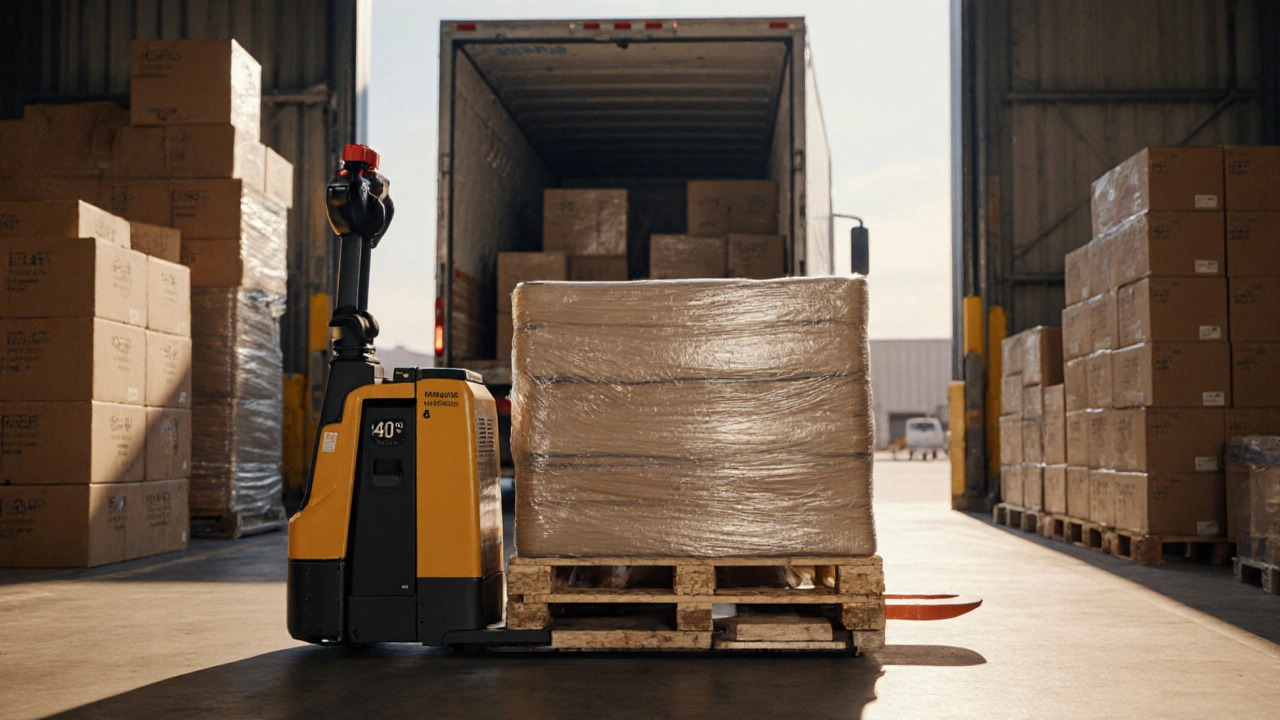Pallet vs Parcel Shipping: Which Is Right for Your Business?
When comparing Pallet vs Parcel shipping, the choice between moving large pallet loads or individual parcels. Also known as pallet versus parcel comparison, it influences cost, speed, and handling requirements. The decision isn’t just about size; it shapes how you pack, track, and deliver. Below we break down the two approaches, point out the hidden trade‑offs, and give you a checklist to pick the right method for any order.
Understanding Pallet Delivery
Pallet delivery, the process of shipping goods stacked on standard pallets. Also called pallet freight, it’s the go‑to for bulk items, heavy equipment, or anything that fits on a 48" x 40" pallet. Because pallets keep items together, you usually load one or more pallets onto a truck, then unload at a warehouse or distribution centre. This method reduces handling steps – the driver picks up the whole pallet instead of dozens of small boxes. Typical attributes include a per‑pallet rate, weight limits (often up to 1,500 lb per pallet), and the need for a pallet jack or forklift at both ends. Companies that ship to retailers, factories, or other B2B partners often rely on pallet delivery to keep costs low and keep inventory intact.
In the logistics chain, pallet delivery requires freight handling equipment and a clear understanding of load dimensions. It also ties directly into Last mile delivery, the final step of getting a shipment to the end‑customer’s door. When a pallet reaches a local hub, it may be broken down into parcels for that last mile, adding another layer of planning.
Understanding Parcel Shipping
Parcel shipping, sending individual packages directly to a recipient’s address. It’s the everyday service you see from couriers like Royal Mail, UPS, and our own Same Day Express Delivery. Parcels are usually under 70 kg and fit inside a standard courier bag or box. Because each parcel is tracked separately, you get detailed real‑time updates and often faster door‑to‑door times. Attributes include weight tiers, dimensional pricing, and optional add‑ons like signature proof or insurance.
Parcel shipping influences the speed of the last mile delivery, making it ideal for e‑commerce orders, small parts, or time‑sensitive items. The trade‑off is higher per‑item cost compared to a single pallet rate, especially when shipping many units to the same location.
Cost, Speed and Tracking: The Core Comparison
Cost is the most visible difference. A pallet typically costs a flat rate based on size and distance, while parcels are priced per weight and size tier. If you’re moving 30 boxes of the same product to the same depot, pallet shipping can shave off a big chunk of the bill. But if you need to send 30 individual gifts to different addresses, parcel shipping wins because you avoid the extra handling of breaking a pallet apart.
Speed also varies. Pallet shipments often move on scheduled freight routes, meaning they might take a day or two longer than express parcel services that promise next‑day or even same‑day delivery. However, modern tracking tech lets you monitor pallet locations in real time, narrowing the visibility gap.
Environmental impact is another angle. Consolidating items on a pallet generally reduces the number of trips a truck makes, cutting fuel use per unit shipped. Parcel routes, especially when they involve many stops, can increase emissions. Companies balancing sustainability with service levels often use a mix of both.
Decision Factors: When to Choose Which
Ask yourself these questions before you book a shipment:
- How many items am I sending and how heavy are they?
- Do the items need special handling (fragile, temperature‑controlled)?
- What’s the delivery deadline? Do I need same‑day, next‑day, or can I wait a day or two?
- Where are my customers located – a single warehouse or many dispersed addresses?
- What’s my budget for shipping versus the value of faster delivery?
If you answer “many items, single destination, bulk weight,” pallet delivery is likely the smarter bet. If you answer “few items, multiple doors, urgent,” parcel shipping makes more sense. Remember that you can also combine both: ship a pallet to a regional hub, then split it into parcels for the final leg.
Hybrid Strategies and Real‑World Examples
Many businesses use a hybrid approach to get the best of both worlds. For instance, a furniture retailer might send pallets of bulk pieces to a local distribution centre and then ship individual cushions or accessories as parcels directly to customers. This reduces long‑haul costs while still offering fast door‑to‑door service for smaller items.
Another example is an e‑commerce brand that runs a “click‑and‑collect” system. They receive pallets at a nearby warehouse, break them down into parcels, and let customers pick up the parcels on the same day. The brand saves on freight costs and still delivers the speed customers expect.
What’s Next?
Below you’ll find a curated collection of articles that dive deeper into related topics. We cover the stress points in logistics, cheapest overnight options, the role of freight forwarders, and how last‑mile risk can affect your choices. Whether you’re a small shop owner or a logistics manager, these resources will help you fine‑tune your pallet‑or‑parcel strategy and keep your supply chain humming.
Is Pallet Shipping Cheaper? Costs, Savings & When to Use Pallets
Discover when pallet shipping beats parcel and LTL costs, how rates are calculated, and practical tips to save on freight. Get a clear checklist and FAQs.
© 2025. All rights reserved.

